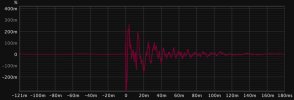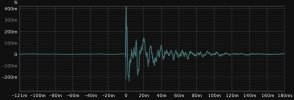Non-technical audio tinkerers cannot get their heads around the 'transfer function' between amplifier output terminals and speaker terminals. Instead, they write volumes of mostly nonsense about tight bass, shouty treble, glorious midrange, etc.
The amplifier output transfer function is a complex one, especially if includes feedback. The speaker input is just as complex, due to the crossover circuits and the non-linear nature of the driver motors and the box.
Take a look at Amir's speaker impedance vs. frequency, especially phase angles. Now, estimate that the amp has much different impedances and phase angles of its own. Imagine how erratically they transfer current, voltage, and power.
Now, stir in a myriad of transients from music, remembering that the Klippel-esque data is just valid for steady-state sine waves in simple sweeps. To exaggerate the illusion, think of one fat 'slinky' attached to another different size one... and how they interact... as Mozart or The Rolling Stones figuratively push them across a rocky, downward incline...
Does this make your head hurt? Well, then change amplifiers and start all over...
Are you still wondering why amplifier/speaker combinations sound different?
Sorry for hurting your poor head. It's why people can't fathom engineers or issues they may face versus those of 'cut and try' tinkerers.

-Just one man's view


